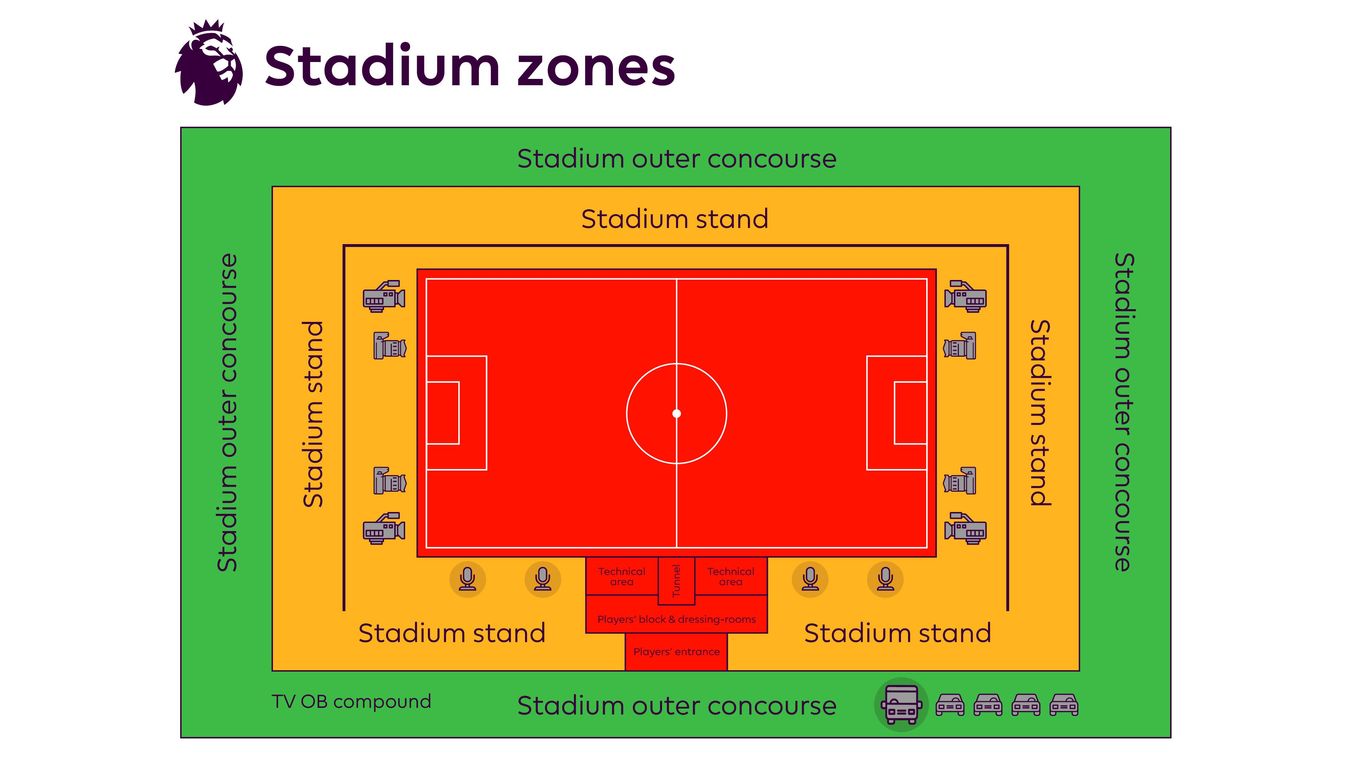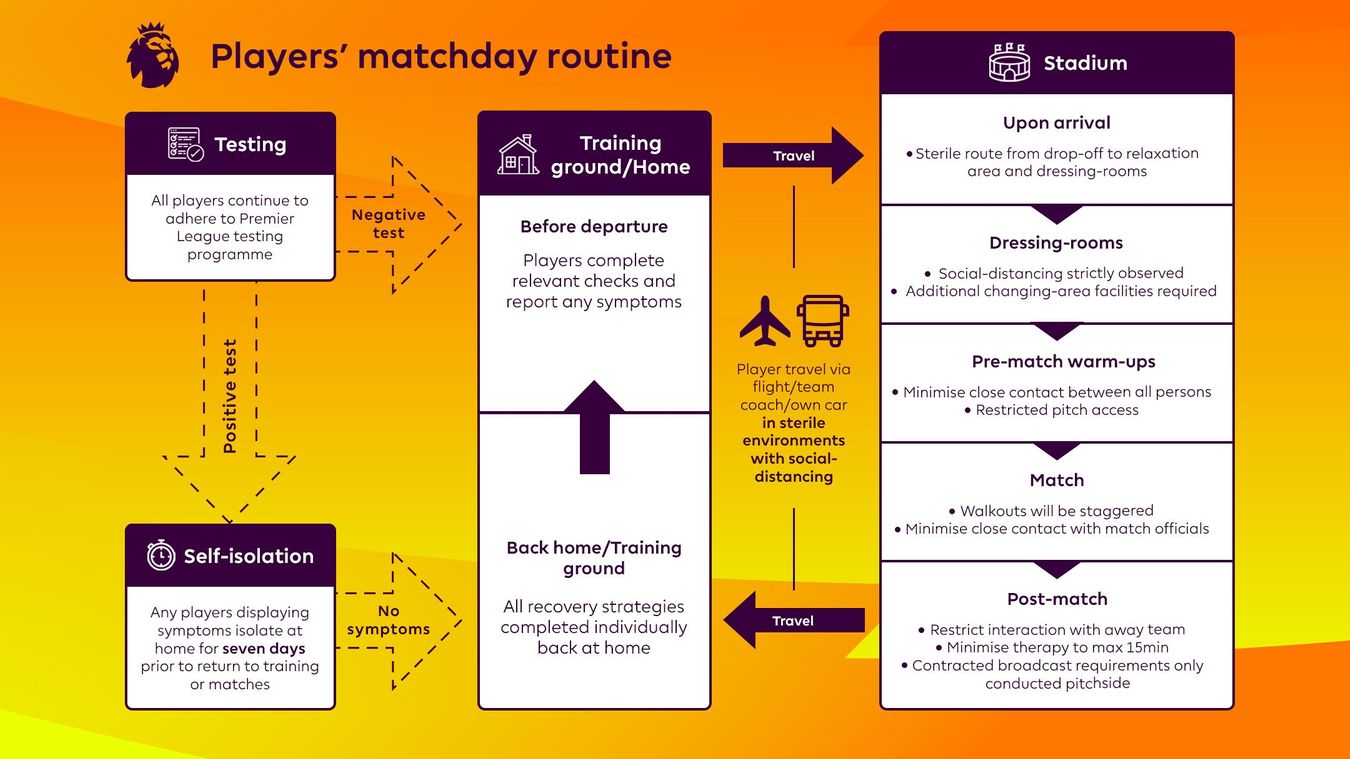Memorial to Transport Workers who Lost Their Lives to COVID-19 Unveiled
A new memorial in Aldgate that commemorates transport workers who passed away due to COVID-19 has been officially opened by the Mayor of London Sadiq...
Read Full ArticleAfter a 100 day gap, the Premier League officially resumed on 17 June 2020, after working with clubs to ensure risks are assessed and minimised.
The remaining games have since been played “behind closed doors” with no fans permitted in stadiums. However, as well as the players themselves, numerous operational staff have returned to work, as well as the individual clubs’ supporting employees.
Let’s take a look at how the Premier League has managed its facilities and operations to safely support these individuals in returning to stadiums.
Even the Chief Executive of the Premier League Richard Masters admitted that early on during the COVID-19 pandemic, he had worries about when matches would be able to go ahead:
"There was doubt when the whole country went into lockdown, when all industry sectors were wondering when some semblance of normality could be returned to. But as soon as we spoke to government, as soon as we'd spoken to our clubs and put in place a skeleton plan, since then we've been trying to fill in the gaps, take it step by step.”
Since then, both the league itself and clubs have put in place strict medical protocols, risk assessments and regular testing programmes.
Clubs have been instructed to abide by a strict colour coding system within stadiums. Each venue is divided into three zones: red, amber and green. Each zone has unique protocols and procedures and is only accessible to particular people.
Around 300 people are permitted to access the stadiums for each match.

Picture: A graphic showing the various colour-coded safety zones in stadiums. Image credit: Premier League
The red zone is strictly reserved for individuals who have had a coronavirus test in the five days prior to the match. This zone includes the pitch, the technical area, the tunnel and the dressing rooms. The maximum number of people allowed in this zone is 110.
The Premier League website states that these people must have a "clinical passport", a bar code either as a print-out or on their phone. This is scanned to check their most recent test result is negative before they can enter the stadium.
The amber zone covers the stands, concourses and pitchside interview areas. Entry and exit points are strictly managed and, to gain access, individuals must have completed a medical questionnaire, as well as having their temperature checked on arrival.
This green zone encompasses the area outside the stadium, where access control points, vehicle parking and outside broadcast compounds and units are located.
Both players and staff are required to undergo daily COVID-19 screening, and they must complete relevant checks and report any symptoms before leaving for a match.
However the teams travel to games, they must do so in a sterile environment, applying social distancing, with appropriate space between occupied seats and full hygiene measures observed. Players or staff driving their own vehicles are advised to do so alone.
On arrival at the stadium, players and staff are given a sterile route from their vehicles to the dressing room. Teams are encouraged to stagger their use of changing rooms, while showers can be used, as long as individuals remain socially distanced.
Where there is one tunnel at a stadium, players and match officials will stagger their journeys through them. Match officials' pre-match meeting with captains will also occur out on the pitch.
Widespread disinfection must take place at stadiums, including in changing facilities, dugouts, match balls, goalposts, corner flags and substitution boards.
Hand-sanitiser dispensers must also be freely available throughout the stadium, as well as hand-washing facilities being clearly signposted.
Staff on team benches must wear face coverings, although this will be waived at certain times for broadcast presenters and commentators.
Rather than forming a straight line, players will now stand in a staggered formation prior to the match beginning. There is also to be no handshake between the two teams, and no handshakes at the coin toss.
Trainers’ benches will be expanded to enable social-distancing during the match, including using additional designated areas.
In terms of replacement balls, there are no ball assistants during “behind closed doors” football, so it’s at the referee’s discretion as to whether the ball can be retrieved without a noticeable delay. Alternatively, spare balls are placed around the pitch.

Picture: A flow diagram showing the players' matchday routines. Image credit: Premier League
If a player needs treatment on the pitch, any club staff performing that treatment must wear the appropriate PPE.
The referee will signal for drinks breaks to be taken midway through each half. The breaks will last no longer than a minute, with players drinking from their own bottles.
Warm-downs are advised to last no longer than 25 minutes and are likely to be staggered for each team.
Post-match broadcast interviews are to take place pitchside with social-distancing followed at all times. Boom microphones must be used by media companies to maintain social-distancing, being cleaned between interviews. Huddle interviews are not permitted.
Pre and post-match press conferences with managers will be conducted virtually.
More information about safety measures used in the return to Premier League football can be found here.
Picture: A photograph of a football
Article written by Ella Tansley | Published 30 June 2020
A new memorial in Aldgate that commemorates transport workers who passed away due to COVID-19 has been officially opened by the Mayor of London Sadiq...
Read Full ArticleMPs are recommending a series of measures to prepare the UK for future public health emergencies, resulting from an inquiry into the role of cleaning during the COVID-19...
Read Full ArticleApril Harvey from Sodexo has been recognised for her role as health, safety and risk lead in the mobilisation of the first COVID quarantine facility and COVID-19 test...
Read Full ArticleDuring the pandemic, COVID has raised the profile of the quality of the air we breathe in our buildings – how do we maintain this priority throughout the winter...
Read Full ArticleResearchers at Griffith University, Australia, have developed an AI video surveillance system to detect social distancing breaches in an airport without compromising...
Read Full ArticleA report commissioned by the government’s chief scientific adviser Sir Patrick Vallance has highlighted the crucial role played by building ventilation in...
Read Full ArticleWorking in conjunction with the Defence Forces Ireland and the Czech University of Defence, an Irish medical technology company has developed an innovative Pathogen...
Read Full ArticleFor some, Freedom Day marks a much-awaited return to some of our pre-pandemic habits, including working at the office instead of at home. But is everyone keen to come...
Read Full ArticleAround half of UK office workers feel confident about returning to work without a fully vaccinated workplace. Research shows that 80 per cent of UK office...
Read Full ArticleIn March's FM review, ThisWeekinFM's Editorial Team reflects on the past year, exploring how people have been feeling in the past few months and considering...
Read Full Article